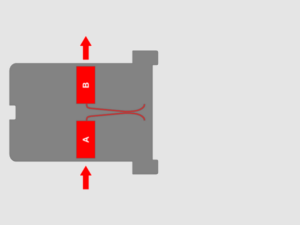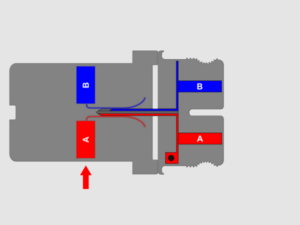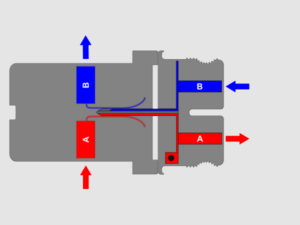The FTS serves as a test block that facilitates the connection of substation devices, such as protection relays, fault recorders and, revenue meters to voltage and current transformers, as well as other equipment on the system side of a power grid.
The FTP is a specially designed test plug that is keyed to a specific configuration of FTS test blocks. When inserted into the corresponding test block, the FTP plug isolates the substation devices from the equipment on the system side. Additionally, it enables the connection of test equipment for conducting secondary injection tests.

Closed circuit
A FTS test block contains 8, 10, 12, 14, 16, 18 or 20 modular units (or poles) each allocated to a current, voltage, signal or trip circuit. Each circuit is connected through the block via two silver-plated copper contacts, pressed securely together by two pressure springs to create a highly conductive electrical connection. In this situation, an electrical connection is established between the device side (B) and the system side (A).

Open Circuit
When testing, the corresponding FTP test plug is inserted into the test block. In this position, the device and system sides of the test block are isolated from each other. The test plug includes internal shorting bridges for the current circuits. When the test plug is removed from the test block, the internal springs force the contacts back together, returning the circuits to its normally-closed position.

Signal Injection
Banana jacks in the test plug allow the connection of a test set to the device side of the test block and the associated signal injection. Access to the system side is also provided.
For technical documentation and product details, please reach out via email or our contact form.
Click here to connect with our team.
Other documents:
